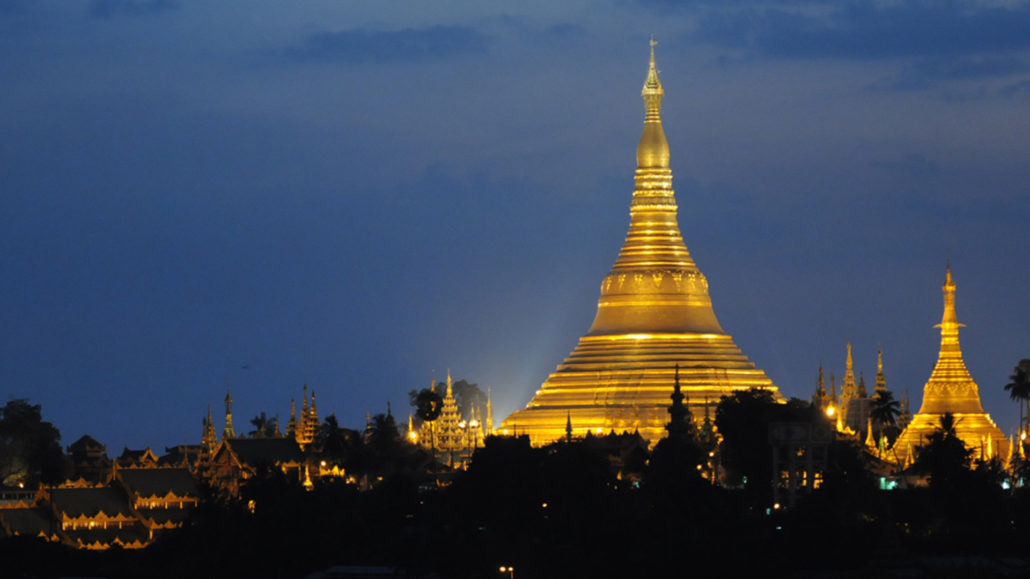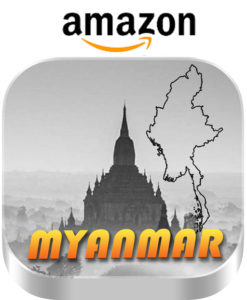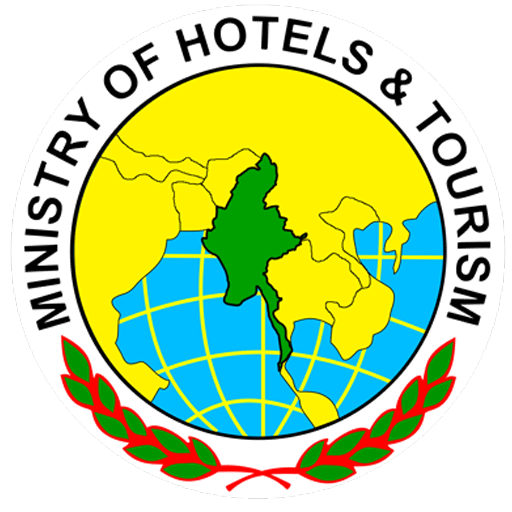Shwedagon Pagoda
The Shwedagon Pagoda is one of the most famous pagodas in the world and it is certainly the main attraction of Yangon (Rangoon), Myanmar’s capital city. The Pagoda situated on Singuttara Hill in the center of Yangon (Rangoon), is the most sacred Buddhist stupa in Myanmar and one of the most important religious reliquary monuments in the world. Locally known as Shwedagon Zedi Daw The, it sits atop of a hill and is 99 meters high. It can be seen from most places of Yangon (Rangoon) day and night as the golden roof illuminates the city.
 The proposed property includes the hill atop of which the main stupa is located, the hill-top reliquary stupa and associated religious buildings and sacred statuary, bells, and other emblems situated on the hill, as well as the hill’s surrounding sacred perimeter. The proposed property comprises a total area of 46.3 hectares.
The proposed property includes the hill atop of which the main stupa is located, the hill-top reliquary stupa and associated religious buildings and sacred statuary, bells, and other emblems situated on the hill, as well as the hill’s surrounding sacred perimeter. The proposed property comprises a total area of 46.3 hectares.
No visit to the Union of Myanmar is complete without a visit to the 2,500 years old Shwedagon Pagoda, which enshrines strands of Buddha’s hair and other holy relics. Located west of the Royal Lake on 114 -acre Singuttara Hill in Yangon, Shwedagon Pagoda is the most sacred and impressive Buddhist site for the people of the Union of Myanmar. From a humble beginning of 8.2 meters, the Shwedagon Pagoda today stands close to 110 meters. Shwedagon Pagoda is covered with hundreds of gold plates and the top of the stupa is encrusted with 4531 diamonds; the largest of which is a 72 carat diamond. It is clearly one of the wonders of the religious world. Shwedagon Pagoda is a repository of the best in Myanmar heritage – architecture, sculpture and arts. The Shwedagon Pagoda consists hundreds colorful temples, stupas, and statues that reflects the architectural era spanning almost a 2,500 years.
According to local chronologies dating from the14th century CE, the Shwedagon is believed to enshrine the bodily relics of the historical Buddha, Gautama, as well as artifactual relics purported by long tradition to be associated with the three other most recent previous Buddhas of our present era (kalpa).The enshrined relics include: eight strands of hair from the head of Gautama Buddha, as well as a piece of the robe believed to have belonged to Kassapa Buddha, a water filter attributed to Konagamana Buddha, and the staff of Kakusandha Buddha.
There is little wonder that the Shwedagon is referred to in Myanmar as “The crown of Burma.”
 To understand this monumental work of art and architecture, visitors will experience an insider’s view of this magnificent symbol of Buddhism to the lives of the Myanmar people. Shwedagon Pagoda forms the focus of religious as well as community activities – the bustling of devotees and monks washing the statues, offering flowers, worshiping, and meditating. Shwedagon Pagoda is administered by the Board of Trustees of Shwedagon Pagoda.
To understand this monumental work of art and architecture, visitors will experience an insider’s view of this magnificent symbol of Buddhism to the lives of the Myanmar people. Shwedagon Pagoda forms the focus of religious as well as community activities – the bustling of devotees and monks washing the statues, offering flowers, worshiping, and meditating. Shwedagon Pagoda is administered by the Board of Trustees of Shwedagon Pagoda.
As Myanmar’s most revered shrine it has always been customary for families, mendicants and followers of the Buddha to make the pilgrimage to the Shwedagon in much the same way that Muslims feel compelled to visit the Kaaba at Mecca at least once in their lifetime.
Such is the potency of the Shwedagon that Myanmars generally hold it to be indestructible. Despite a major earthquake in 1769, several smaller quakes in the 20th century and a major fire in 1931, it still stands imposingly on the top of a hill.
Visitors are required to remove their shoes upon entering the Shwedagon and negotiating the scalding floor tiles between the shaded sanctuaries is not an easy process.
The pagoda is said to contain eight hairs of the Buddha, a fact that only adds to its prestige. The stairways and bridges leading into the main sanctuary serve the thousands of pilgrims who flock here, and flower and book stalls, peddlers of religious souvenirs and tea shops do a brisk trade during the Shwedagon’s long hours of opening.”The Shwe Dagon,” wrote Somerset Maugham in 1930, “rose superb, glistening with gold, like a sudden hope in the dark night of the soul.”
 Travelers will see temples everywhere they go in Myanmar, and will doubtless be struck by the wealth and profusion of building styles. At Pagan for example, there is an ancient plain containing over 2,000 temples and pagodas, surely one of the most remarkable ensembles in the world. Yet still, assessed on their individual merits, the Shwedagon Pagoda remains unrivaled as temple, meeting place and symbol of national identity.
Travelers will see temples everywhere they go in Myanmar, and will doubtless be struck by the wealth and profusion of building styles. At Pagan for example, there is an ancient plain containing over 2,000 temples and pagodas, surely one of the most remarkable ensembles in the world. Yet still, assessed on their individual merits, the Shwedagon Pagoda remains unrivaled as temple, meeting place and symbol of national identity.








